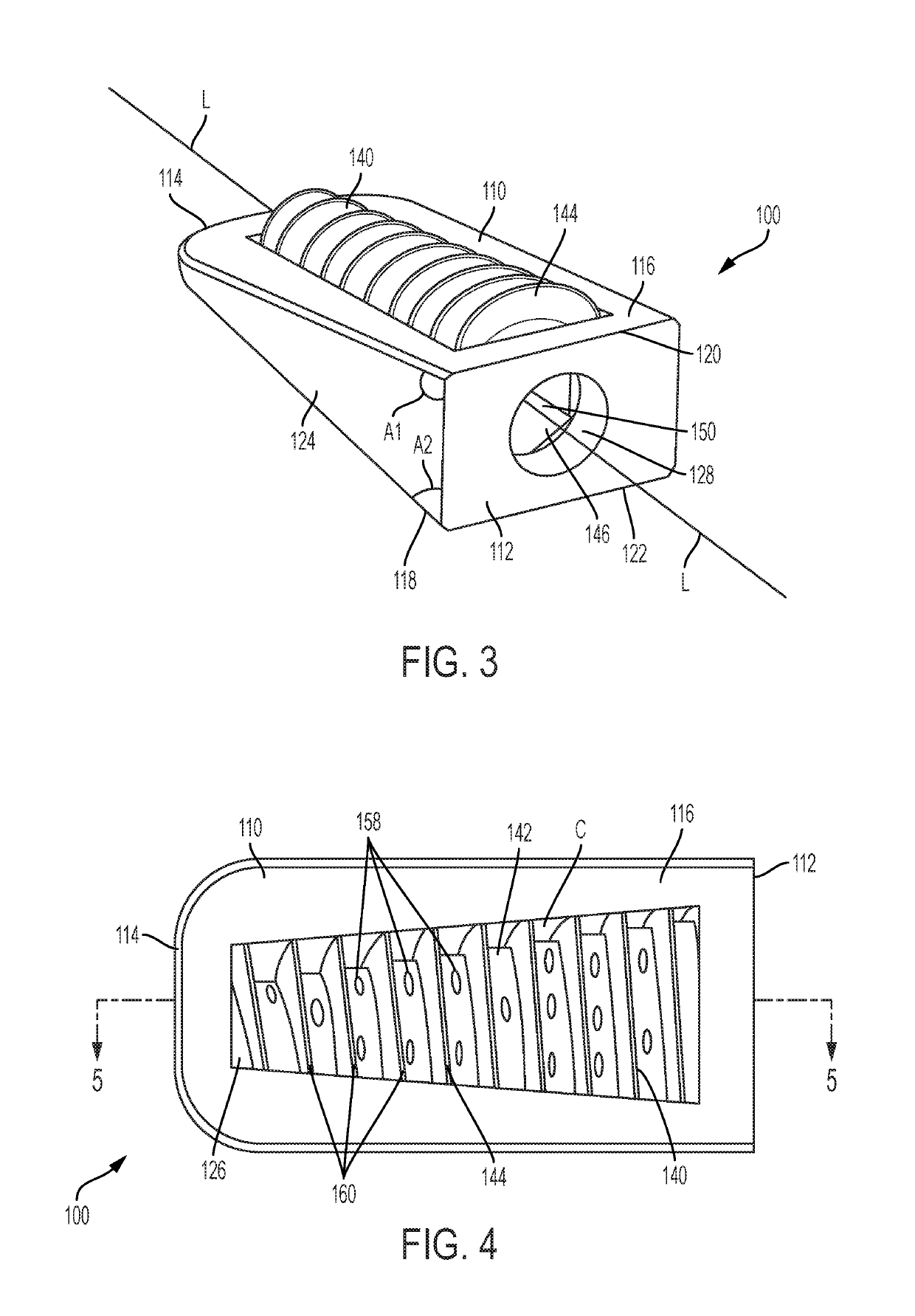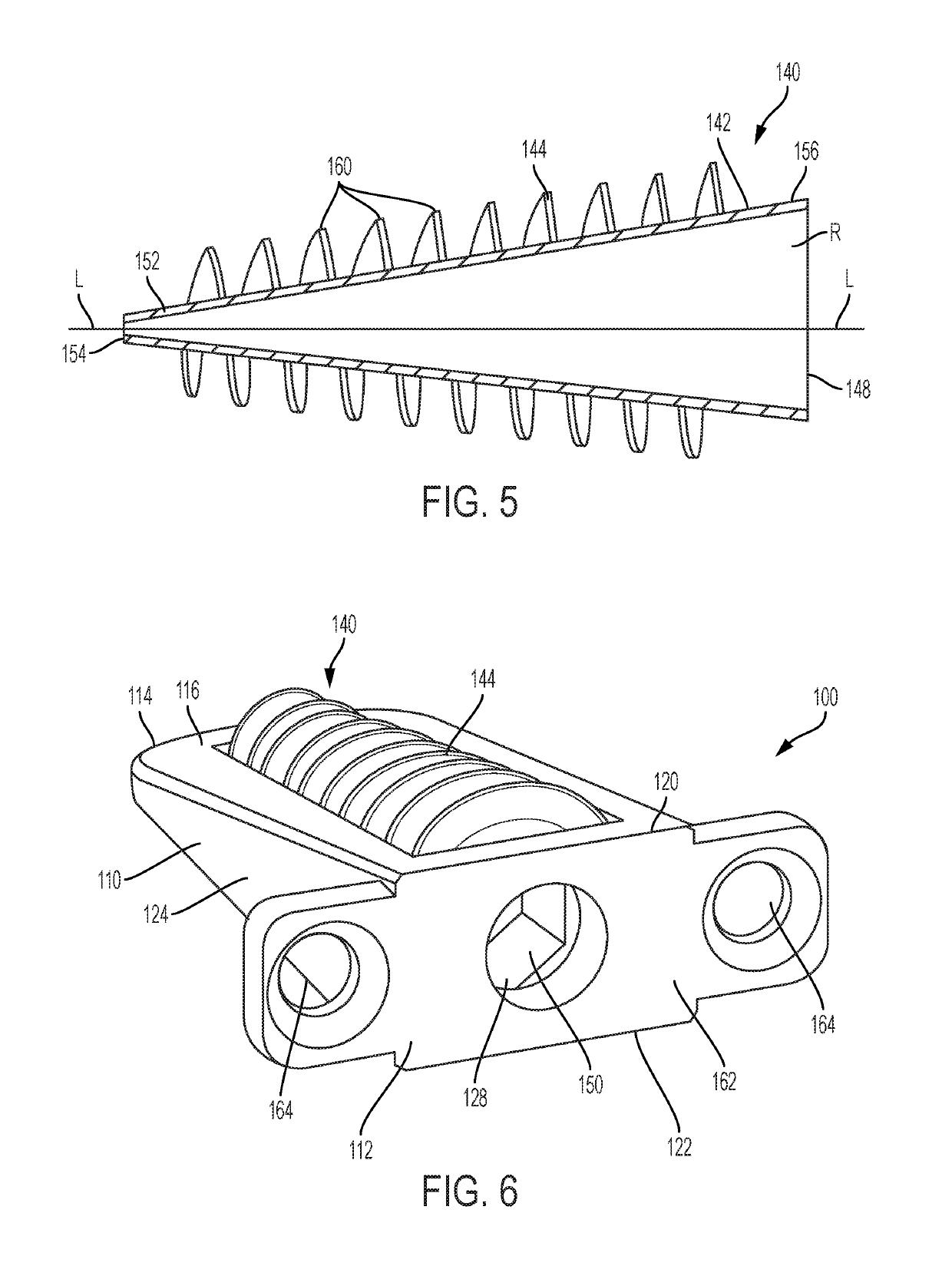Distal Radius Wedge Screw
- Summary
- Abstract
- Description
- Claims
- Application Information
AI Technical Summary
Benefits of technology
Problems solved by technology
Method used
Image
Examples
Embodiment Construction
[0022]As used herein, “axial” means along or parallel to the longitudinal axis of the implant device and “radial” means in the perpendicular direction thereto. “Rotation” refers to rotation about the longitudinal axis unless otherwise described. “Interior” means radially inward, either toward or facing the longitudinal axis, and “exterior” means radially outward or away from the longitudinal axis. The terms “proximal” and “distal”, respectively, mean the end of the device nearest the surgeon during a surgical implantation procedure and the opposite end of the device furthest from the surgeon during the surgical implantation procedure.
[0023]Throughout this description, a reduced fracture refers to a reduced distal radius fracture, however, the devices and methods described hereinafter can be used to fixate any fracture, naturally occurring or surgeon-induced, such as would be the case in performing a high tibial osteotomy as disclosed in U.S. Pat. Nos. 8,241,292; 8,926,618; 8,192,441...
PUM
 Login to View More
Login to View More Abstract
Description
Claims
Application Information
 Login to View More
Login to View More - R&D
- Intellectual Property
- Life Sciences
- Materials
- Tech Scout
- Unparalleled Data Quality
- Higher Quality Content
- 60% Fewer Hallucinations
Browse by: Latest US Patents, China's latest patents, Technical Efficacy Thesaurus, Application Domain, Technology Topic, Popular Technical Reports.
© 2025 PatSnap. All rights reserved.Legal|Privacy policy|Modern Slavery Act Transparency Statement|Sitemap|About US| Contact US: help@patsnap.com



